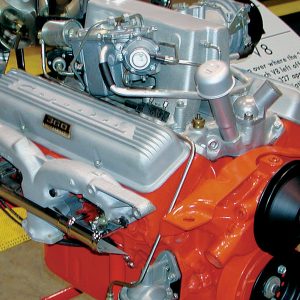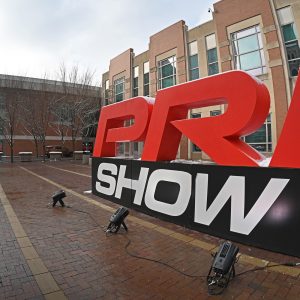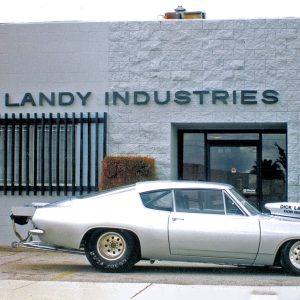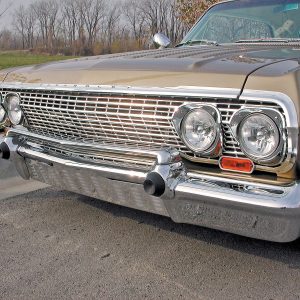


THE AUTO BUILDER
Featured
- All Post
- 20 High Priority - SR Super Rod
- Builds
- 25 High Priority - FB Ford Builder
- Cars
- 30 High Priority - AR American Rodder
- 01 Post Status
- 35 High Priority - RD Rodders Digest
- 40 High Priority - OTR On the Road
- 45 High Priority - SRB Street Rod Builder
- 50 High Priority - TB Truck Builder
- 55 High Priority - BSCENE Buckaroo Scene
- 60 High Priority - FPB Family Power Boat
- Trucks
- Swaps
- Performance Boats
- _000 Home Sliders
- Builders
- 00 Sidebars
- Manufacturers
- 05 High Priority - HCI Hot Compact Imports
- 05 Publications
- 10 High Priority - CR Chevy Rumble
- Back
- Chassis
- Engine
- Fuel System
- Electrical
- Exhaust
- Transmission / Drivetrain
- Suspension
- Steering
- Brakes
- Wheels and Tires
- Interior
- Exterior
- Accessories
- Power Adders
- Back
- Chassis
- Engine
- Fuel System
- Electrical
- Exhaust
- Transmission / Drivetrain
- Suspension
- Steering
- Brakes
- Wheels and Tires
- Interior
- Exterior
- Accessories
- Power Adders
- Back
- Chassis
- Engine
- Electrical
- Exhaust
- Fuel System
- Transmission / Drivetrain
- Suspension
- Steering
- Brakes
- Wheels and Tires
- Interior
- Exterior
- Accessories
- Power Adders
- Back
- Chassis
- Engine
- Electrical
- Exhaust
- Fuel System
- Transmission / Drivetrain
- Suspension
- Steering
- Brakes
- Wheels and Tires
- Interior
- Exterior
- Accessories
- Power Adders
- Back
- Chassis
- Engine
- Fuel System
- Electrical
- Exhaust
- Transmission / Drivetrain
- Suspension
- Steering
- Brakes
- Wheels and Tires
- Interior
- Exterior
- Accessories
- Power Adders
- Back
- Chassis
- Engine
- Fuel System
- Electrical
- Exhaust
- Transmission / Drivetrain
- Suspension
- Steering
- Brakes
- Wheels and Tires
- Interior
- Exterior
- Accessories
- Power Adders
- Back
- Chassis
- Engine
- Fuel System
- Electrical
- Exhaust
- Transmission / Drivetrain
- Suspension
- Steering
- Brakes
- Wheels and Tires
- Interior
- Exterior
- Accessories
- Power Adders
- Back
- Engine
- Fuel System
- Electrical
- Outdrives
- Steering
- Interior
- Accessories
- Power Adders
- Exterior and Hull
- Back
- Chassis
- Engine
- Electrical
- Exhaust
- Fuel System
- Transmission / Drivetrain
- Suspension
- Steering
- Brakes
- Wheels and Tires
- Interior
- Exterior
- Accessories
- Power Adders
- Back
- Chevrolet
- Cadillac
- Pontiac
- AMC
- Buick
- Jeep
- Lincoln
- Ford
- Honda
- GMC
- BMW
- Mitsubishi
- Dodge
- Nissan
- Chrysler
- Subaru
- Toyota
- Plymouth
- Mercury
- Volvo
- Volkswagen
- Oldsmobile
- Acura
- Back
- 05 Pub HCI Hot Compact Imports
- 15 Pub 4x4 4x4 Builder
- 20 Pub SR Super Rod
- 25 Pub FB Ford Builder
- 30 Pub AR American Rodder
- 35 Pub RD Rodders Digest
- 40 Pub OTR On the Road
- 55 Pub BSCENE Buckaroo Scene
- 10 Pub CR Chevy Rumble
- 50 Pub TB Truck Builder
- 60 Pub FPB Family Power Boat
- 45 Pub SRB Street Rod Builder
- Back
- Chip Foose
- Ring Brothers
- Jack Fuller
- Bob Cullipher
- Jerry Nichols
- Bobby Alloway
- Jesse James
- Carl Casper
- J.F. Launier
- Steve Sellers
- Boyd Coddington
- Rad Rides by Troy
- Cal Auto Creations
- George Barris
- West Coast Customs
- Back
- Street Rods
- Hot Rods
- Late Model
- Drag Race
- Handling
- Compact Cars
- Chassis
- Engine
- Fuel System
- Electrical
- Exhaust
- Transmission / Drivetrain
- Suspension
- Steering
- Brakes
- Wheels and Tires
- Interior
- Exterior
- Accessories
- Power Adders
- Chassis
- Engine
- Fuel System
- Electrical
- Exhaust
- Transmission / Drivetrain
- Suspension
- Steering
- Brakes
- Wheels and Tires
- Interior
- Exterior
- Accessories
- Power Adders
- Chassis
- Engine
- Electrical
- Exhaust
- Fuel System
- Transmission / Drivetrain
- Suspension
- Steering
- Brakes
- Wheels and Tires
- Interior
- Exterior
- Accessories
- Power Adders
- Chassis
- Engine
- Electrical
- Exhaust
- Fuel System
- Transmission / Drivetrain
- Suspension
- Steering
- Brakes
- Wheels and Tires
- Interior
- Exterior
- Accessories
- Power Adders
- Chassis
- Engine
- Electrical
- Exhaust
- Fuel System
- Transmission / Drivetrain
- Suspension
- Steering
- Brakes
- Wheels and Tires
- Interior
- Exterior
- Accessories
- Power Adders
- Chassis
- Engine
- Fuel System
- Electrical
- Exhaust
- Transmission / Drivetrain
- Suspension
- Steering
- Brakes
- Wheels and Tires
- Interior
- Exterior
- Accessories
- Power Adders
- Back
- 05 Post Imported
- 20 Post Missing Images (All)
- 25 Post Missing Images (Partial)
- 15 Post In Progress
- 30 Post Internal Review
- 40 Post On Hold
- 50 Post Approved
- 10 Post Images Imported
- 17 Post Missing TXT Files
- 18 Post Missing PDF Files
- 27 Post Missing Content
- Back
- Chassis
- Engine Swaps
- Interior Swaps
- Driveline
- Back
- Street Trucks
- OffRoad Trucks
- Chassis
- Engine
- Fuel System
- Electrical
- Exhaust
- Transmission / Drivetrain
- Suspension
- Steering
- Brakes
- Wheels and Tires
- Interior
- Exterior
- Accessories
- Power Adders
- Chassis
- Engine
- Fuel System
- Electrical
- Exhaust
- Transmission / Drivetrain
- Suspension
- Steering
- Brakes
- Wheels and Tires
- Interior
- Exterior
- Accessories
- Power Adders
- Back
- 01 Sidebar Left
- 01 Sidebar Right
Spotlighter
POPULAR READS
WHERE’S THE POWER?
We Show You Where and How to Find It
Author

Henry P. Olsen
Words & Photography
Before we get into what was uncovered, we first should explain how to go about finding the solutions. These elementary steps are essential when you set out to properly tune a high-performance engine and make all of the power that has been built into it driveable. This is accomplished using both basic tuning tools, plus a couple of newer ones that are within the price range of most enthusiasts. You can also take your car to a performance tuning specialist who follows these basic procedures and has the proper equipment.
Tuning a performance engine to unlock all the power that has been built in—while squeezing as many miles of enjoyment out of today’s overpriced gasoline—has generally been a job for tuners who could read a spark plug to detect what changes in the air/fuel mixture are needed. These tuners would look at the spark plugs, the exhaust ports and the first 6 inches inside the header for the proper “color.” They then made an educated guess at what jet size changes were needed. The disadvantage of this method always has been that the header and spark plugs can only indicate what the mixture was at that exact rpm and load condition when the plug check was done. So no matter how experienced the tuner, tuning was mostly by trial and error.
Nowadays, many top tuners are taking advantage of the technology being used to make today’s new cars run as well as they do, such as an infrared exhaust gas analyzer and/or a wideband oxygen sensor to read the content of the engine’s exhaust. A wideband oxygen sensor reads the oxygen or unburned exhaust combustibles content to determine the air/fuel mixture. A 5-gas exhaust gas analyzer measures the carbon monoxide to determine the air/fuel mixture. This can also show how much of the fuel is being wasted as hydrocarbons (misfire). The carbon dioxide is an indicator of engine efficiency, and an overly advanced ignition timing can be seen by looking at the nitrous oxide reading.
In the past, such exhaust gas analyzers tended to be large in size and very expensive. Newer units, however, are not only compact and portable, they are also more affordable. Innovate Motorsports, for example, sells a digital air/fuel meter with a wideband oxygen sensor in the $350 range. At that price, any serious super rodder should have one in his toolbox. My toolbox has both a 5-gas exhaust gas analyzer and the Innovate unit.
With that basic introduction, we will now show you the steps involved in finding hidden power.
Ignition Timing and the Advance Curve
The first check we did on the ’55 Chevy 502 was the initial timing to see how much was added by the mechanical and vacuum advance. The initial timing was 10 degrees BTDC, the mechanical advance added 26 degrees at 2,800 rpm, and the vacuum advance added an additional 20 degrees of advance. If the vibration dampener is degreed, you can read the total spark advance using a conventional timing light. If not, a dial-back timing light will allow you to read the amount of ignition advance.
The unit we use is from SPX/OTC, and the reference we use for initial timing can be found on the Barry Grant website in the Demon selection guide section. This uses the camshaft duration at 0.050-inch valve lift to provide a starting point of where the initial timing should be. Because this engine had a serious performance camshaft, the initial timing was set at 18 degrees BTDC. The next step was to remove the distributor and change the advance curve on a distributor test bench, so we could still have the 36 degrees of mechanical advance all in by 3,500 rpm (with the 18 degrees of initial timing). We also changed the vacuum advance to a new unit that supplied only 10 degrees of advance, since 20 degrees of vacuum advance is excessive for today’s gasoline.
After installing the re-curved distributor and setting the initial timing at the recommended 18 degrees, the engine idled much better in gear and the throttle response seemed better. No matter what ignition system you use, if the ignition spark timing is not correct for the needs of the engine, the engine will not produce all of the potential power built into it. Any distributor (performance replacement or original equipment) must have the mechanical and vacuum advance curves checked and then tailored to the engine and the fuel being used.
The total ignition advance that works best for most 9.5:1 compression engines is 36 degrees, including the initial timing and a maximum of 10 degrees of additional advance from the vacuum advance. The vacuum advance we use for HEI-style distributors is ACDelco PN D1370A. For points and MSD distributors, Accel has an adjustable vacuum advance (PN 31034) that can be used to obtain the desired 10 degrees of advance from the vacuum advance. If the engine does not have enough ignition spark timing advance it may lack power, have poor throttle response, use too much fuel and cause the engine to run hotter. And if the engine has too much ignition spark advance, the engine may lack power and ping, use too much fuel and also cause the engine to run hot. The correct ignition timing will create maximum cylinder pressure at about 12 degrees after the piston passes TDC. Only then can you get all the energy out of the fuel, creating maximum power and engine efficiency.
How to Read the Air/Fuel Mixture
The methods used to check the air/fuel mixture are an infrared exhaust gas analyzer or a wideband oxygen sensor. An infrared exhaust gas analyzer is used when you take your emission-controlled car in for a smog check. This type of unit allows the tuner to determine what the air/fuel mixture is by “reading” the exhaust gases. By using an infrared exhaust gas analyzer, the jetting of the carburetor (air/fuel mixture) curve can be checked at idle, at cruise or during power loads, and then be tailored to what your engine requires to run its best at all race/driving conditions. A high nitrous oxide reading taken from the exhaust gas analyzer can be used as a method to determine if the ignition timing is too advanced, creating excessive heat in a cylinder’s combustion chamber.
A wideband oxygen sensor is installed into the exhaust header, or by using the Innovate tailpipe probe, the sensor is read with a digital air/fuel meter. This method determines the air/fuel mixture by looking at the oxygen/unburned combustibles in the engine exhaust. While the readings can be very accurate, false readings can be caused by the oxygen sensor misreading extra oxygen from an exhaust leak, engine misfire or a high-overlap cam at lower rpm.
Infrared Exhaust Gas Analyzer vs. Wideband Oxygen Sensor Technology
Both the exhaust gas analyzer and wideband oxygen sensor methods can be used to determine what the air/fuel mixture is, and each has advantages and disadvantages. By combining the use of both methods, you can get the best results.
The infrared method is more expensive and slower in reaction time, but because it looks at the entire content of the exhaust, elements such as engine efficiency, misfire and overly advanced timing can be observed. The wideband oxygen sensor method is extremely fast and lower in cost, but the readings can be affected at lower engine speed and load conditions by anything that can cause dilution of the exhaust, such as a high-performance engine camshaft, engine misfire or an exhaust leak. On a supercharged engine, the “blow-through” can affect the readings. The preferred method is to first tune the idle, off-idle and cruise mixture with an exhaust gas analyzer, and then use the Innovate digital air/fuel meter to check and set the air/fuel mixture, while driving at different road speeds and during wide-open acceleration (WOT).
Air/Fuel Mixture Targets
A lean fuel mixture (too little fuel for the amount of air in the combustion chamber) can cause an engine to have a surge or miss at idle and part throttle, stumble on acceleration, overheat, cause a lack of power, and create possible engine failure. An overly rich air/fuel mixture (too much fuel for the amount of air in the combustion chamber) can cause an engine to load up at idle, foul the spark plugs and create a lack of power or run sluggish.
A starting point for air/fuel (a/f) mixtures for most performance engines is:
- Idle: 1% to 3% CO or a 14.1-13.4:1 a/f mixture
- Cruise rpm: 1% CO or 14.2:1 a/f mixture on a mild engine. A high-performance engine will prefer a 3% CO or 13.4:1 a/f mixture
Power mixture and acceleration: 6.6% CO or a 12.0:1 a/f mixture for a “normal” engine. A high-performance engine with improved combustion chamber design (such as Pro-Stock or Winston Cup engine) may use a slightly leaner power mixture of 4% CO or a 13.0:1 a/f ratio. A supercharged engine can use a power mixture richer than 6.6% or 12:1 as a method to help control the detonation that can be caused by the higher cylinder pressures.
If you are buying an engine package that has been dyno tuned or developed and run on an engine dynamometer, get the engine builder to supply you with the air/fuel mixture he ran the engine on the dyno (for both maximum power and cruise rpm loads), and be sure that these are the same with the engine in the vehicle. If you have a custom engine built and he runs it on a dyno, have the builder record the a/f mixture with an a/f meter (such as the Innovate Motorsports unit). Then you can use the recorded data to tune the fuel curve to supply the engine with the same a/f mixture that the engine builder used on the dyno.
Tuning the A/F Mixture With an Infrared Exhaust Gas Analyzer
The reading from an infrared exhaust gas analyzer will indicate a/f ratio, engine misfire, engine combustion efficiency and excessive combustion chamber heat (detonation) by looking at the following exhaust gases:
- Carbon Monoxide (CO) – The reading from an infrared gas analyzer is the reading that we use to determine the air-to-fuel ratio. (Note: CO is partially burned fuel.)
- Hydrocarbons (HC) – The amount of unburned fuel or an indicator of an engine misfire; the best mixture gives you the lowest HC.
- Carbon Dioxide (CO2) – The product of complete combustion; the best mixture gives you the highest CO2 reading.
- Oxygen (O2) – A high O2 reading indicates a lean mixture; an exhaust leak or the engine has a “hot” cam. Note: If O2 is above 2 percent to 3 percent, the readings of CO, HC, CO2 and NOx may need to be corrected for the dilution caused by the extra O2.
- Oxides of Nitrogen (NOx) – A gas created by excessive combustion chamber heat; in many cases a high reading may be related to excessive ignition timing creating detonation that can result in engine damage.
The best power and cruise a/f mixtures (CO) will burn all the O2 in the cylinder and create the lowest amount of engine misfire (HC). The ideal a/f mixture for each engine rpm and load condition will also cause the engine efficiency (CO2) to be at its highest.
Tuning With a Digital A/F Meter
The digital a/f meter method using an extended range oxygen sensor requires you to know what mixture your engine needs for each driving condition. Remember, too, not every engine needs the same a/f mixture. This data should be available from your engine builder, or you can use an infrared exhaust gas analyzer to help you determine what mixture your engine needs to run its best.
The a/f meter method uses a wideband oxygen sensor to determine the fuel mixture by analyzing the unburned combustibles in the exhaust gas. An extended-range oxygen sensor can read a/f mixtures as rich as 9:1, or on the lean side it can read a/f mixtures of 19:1 or leaner (a standard oxygen sensor is only accurate at a/f mixtures of around 14.7:1). This method has the advantage of extremely fast reaction times for the readings. However, it can be less than accurate on an engine with an aggressive racing cam or a supercharged application at light-load/low-rpm testing conditions due to the excessive oxygen in the exhaust that is created by the cam overlap or the supercharger blow-through effect.
Innovate Motorsports’ digital air/fuel meter will allow you to sample and record the a/f mixture data at a rate of 12 samples per second over a period of up to 44 minutes. This data will then allow you to tune the fuel mixture to the ideal a/f mixture curve that the infrared exhaust gas analyzer helped you establish. The use of an infrared exhaust gas analyzer, while slower in reaction time, has the advantage that it not only reads the oxygen/unburned combustibles content of the exhaust, but also allows you to determine the a/f mixture by observing the CO reading. The engine’s rate of misfire can be determined by observing the HC reading, the engine’s efficiency can be determined by observing the CO2 reading, and detonation caused by overly advanced ignition timing can be seen by observing the NOx reading.
Checking the ’55 Chevy 502 Fuel Curve
After the basic engine condition and tune-up (fuel pressure, timing curve, etc.) was confirmed to be correct, the next step was to determine the a/f mixture of the 750cfm AFB carb. A 5-gas exhaust gas analyzer was used; however, because a high-overlap camshaft can cause these readings (from an oxygen-sensor-based a/f meter) to be off under low-load conditions, the idle mixture reading was too rich and the off-idle mixture was too lean between 1,000 and 1,800 rpm. Once the engine speed was increased to above 2,500 rpm, the a/f mixture again went too rich.
We then took the car for a test drive, with the Innovate wideband oxygen sensor in the exhaust pipe probe. The readings showed the lean off-idle problem and that the cruise mixture was way rich. We also noted a lack of enough enrichment from the accelerator pump, as the a/f mixture again went lean during WOT. Since this 502 Chevy engine is a serious performance engine, it was decided that rather than invest a lot of time attempting to sort out the AFB carb, we would instead bolt on a carburetor designed for such a high-performance engine with a hot cam. Our decision was to use a 750cfm Barry Grant Mighty Demon carburetor, which was designed for just such an application.
After installing the carburetor and checking the float level through the fuel level sight glass, we checked the idle a/f mixtures to 3-percent CO or a 13.4:1 a/f mixture with the 5-gas exhaust analyzer. We then checked the fuel mixtures at engine speeds up to 3,500 rpm. Out of the box, the a/f mixture jetting was right on for a high-performance engine, 3-percent CO or 13.4:1 a/f mixture.
The next step was to check the a/f mixtures in a road test, during actual road load conditions, such as cruising at speeds of 25 to 65 mph and during WOT conditions. While either the 5-gas exhaust gas analyzer or a wideband oxygen sensor will work to check the a/f mixture for these tests, we chose the Innovate digital a/f meter that uses a wideband oxygen sensor. The readings showed an a/f mixture for the Mighty Demon to be 13.5:1 a/f, which is what we aim for on a high-performance engine at low speeds. At 65mph cruise and wide-open acceleration, a/f mixture was 12.4:1, indicating that the accelerator pump was much more active at WOT compared to the original AFB carb.
The Results of Proper Tuning
The big-block for this ’55, with all of its parts properly matched and now tuned for the engine, supplied all the expected power the car’s owner had hoped for and wanted from his high-performance engine—in all driving conditions, from idle to WOT. The throttle response was more instantaneous, launching the car down the road as only a big-block Chevy engine can. The engine idled much better when the car was in gear, and overall the power was always available when needed. The two obvious missing ingredients were the right carburetor and the correct ignition timing curve(s), along with a little fine tuning to unleash all that available power.
The proper tuning of any engine can make all the difference between a great running engine and an engine that always sounds and runs like it needs a tune-up. For most enthusiasts, one of the big mysteries is how to properly jet a high-performance engine to obtain the correct a/f ratio necessary, not only to supply driveable horsepower when you want to go fast, but also when you are driving in heavy traffic or cruising down the highway. If the a/f mixture is too rich while you are running at cruising speeds, the engine may tend to load up (foul the spark plugs). If the mixture is too lean, the engine may misfire at idle and light loads, or tend to run hot or overheat. Having an a/f mixture correct for all driving conditions will allow you to get all the available horsepower out of your engine, while getting as many miles as possible from a tank of fuel. And it goes without saying that continuous overheating can cause engine damage.
A properly tuned fuel system will allow your performance engine to perform up to its potential and will supply you with a better running, more reliable Chevy.
ARTICLE SOURCES
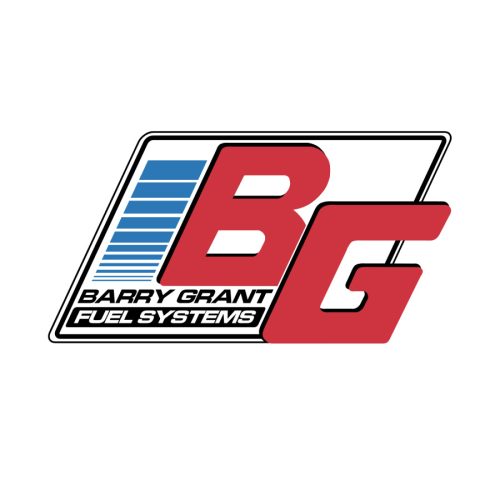
Barry Grant, Inc.
1450 McDonald Rd.
Dahlonega, GA 30533
706/864-8544
John Bishop Hot Rod Tuning
808 Burlway #2
Burlingame, CA 94010
650/343-4860

Bridge Analyzers
1805-B Clement Ave.
Alameda, CA 94501
510/337-1605

Innovate Motorsports
27122A Paseo Espada #904
San Juan Capistrano, CA 92675
949/388-4442
Reggie Jackson’s High Performance Engines
1137 San Mateo Ave.
San Bruno, CA 94066
650/873-7492

SPX/OTC
655 Eisenhower Dr.
Owatonna MN 55060
800/533-6127






